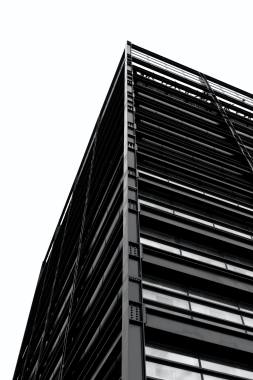🕑 Reading time: 1 minute
Are you considering building a new industrial structure? Prefabricated steel buildings are an excellent option for a wide range of industrial applications, offering cost-savings, durability, strength, flexibility and adaptability.
Prefabricated steel buildings are assembled in sections at the factory that are then transported to the job site for quick and easy assembly. Prefabricated steel buildings are becoming increasingly popular for industrial applications due to their cost-effectiveness, strength, flexibility and adaptability.
In this article, we will discuss the advantages of prefabricated steel buildings and the different industrial applications they are suitable for. We will take a look at the cost savings, flexibility and adaptability, durability and strength, and safety associated with prefabricated steel buildings. We will also explore the potential applications of prefabricated steel buildings, including warehousing, manufacturing, retail, and office spaces.

What is a Prefabricated Steel Building?
Prefabricated steel buildings are structures that are constructed from pre-manufactured or pre-fabricated components. This type of building is manufactured off-site, under controlled plant conditions, then transported and erected on-site. This innovative construction method provides countless advantages for industrial applications.
Prefabricated steel buildings are made from galvanized steel frames that combine the main frame, roof, and wall structures. The frames are then covered in a protective steel sheeting, insulation, and other roofing materials. Each building is fully customizable with a variety of interior and exterior finishes, such as steel siding, brick and stone veneers, and metal panels.
Prefabricated steel buildings provide a number of distinct benefits when used for industrial applications. They are incredibly affordable and quick to assemble, allowing for a rapid turnaround on projects. Additionally, they offer a high degree of rigidity and flexibility and are easily adapted to any size or shape. They also provide superior energy efficiency, as they are designed to trap heat and reduce air infiltration. This type of building is also cost-effective, as it rarely requires any repairs or maintenance.
Overall, prefabricated steel buildings are an excellent choice for industrial applications. They are cost-effective, require minimal installation time and are highly durable. Furthermore, they provide exceptional protection against the elements, reducing the risk of corrosion and other weather-related damage.
Advantages of Prefabricated Steel Buildings
Prefabricated steel buildings offer a unique combination of cost savings and construction efficiency. One of the main benefits of using prefabricated steel buildings is their ability to save both time and money on industrial projects. In this section, we’ll explore how cost savings are achieved with prefabricated steel buildings.
Cost Savings
is one of the main advantages of using prefabricated steel buildings for industrial applications. Steel buildings are much more cost-effective than traditional construction, as steel requires much less labor, material and time to construct. Furthermore, there are significant long-term savings when it comes to energy costs, as prefabricated steel buildings are well insulated and air-tight, meaning they maintain consistent temperatures and require less energy to cool, heat and maintain. Lastly, steel is incredibly durable, meaning maintenance costs are much lower than those of alternate materials. For these reasons, investing in a prefabricated steel building can yield great cost savings compared to traditional construction methods.
Flexibility and Adaptability
are two defining characteristics of prefabricated steel buildings, making them ideal for industrial applications. Prefabricated steel buildings can easily be reconfigured, expanded, or relocated to suit the immediate and changing needs of a business. This allows industrial businesses to reduce capital costs by not having to build an entirely new structure for every change. Not only does this increase functional use, but also reduces construction and acquisition costs. In addition, prefabricated steel buildings are often composed of components that can be modified or altered without needing heavy construction, making them a more affordable and convenient choice. Furthermore, prefabricated steel buildings are easy to construct, meaning that the space created can be quickly and efficiently transformed to meet changing needs.
Durability and Strength
are two of the major benefits of prefabricated steel buildings. Steel is the most frequently used material in commercial and industrial construction projects due to its strength and ability to withstand harsh environments over an extended period of time. Prefabricated steel buildings are also highly resistant to corrosion and fire, making them an ideal choice for areas with high humidity or fire hazards. Furthermore, prefabricated steel buildings are composed of galvanized steel for extra protection against corrosion. This makes them a great option for industrial applications due to their increased durability and strength compared to other materials.
Safety
is paramount in any industrial application. Prefabricated steel buildings provide the ultimate peace of mind, as they are designed to withstand environmental events such as earthquakes and hurricanes, as well as any potential hazardous events that may occur. The steel frames are constructed to meet stringent standards and undergo extensive testing to ensure that they are built to the highest level of safety. Additionally, these buildings come equipped with fire prevention and safety measures such as smoke detectors and sprinkler systems, which further protect workers from harm in the event of an emergency.
Industrial Applications of Prefabricated Steel Buildings
Prefabricated steel buildings offer a number of benefits for industrial applications, including speed of construction, design flexibility and durability. In recent years, these benefits have made prefabricated steel buildings an increasingly popular choice for industrial facilities.
Speed of Construction
The biggest benefit of prefabricated steel buildings is their speed of construction. The steel components can be ordered to specification and then assembled onsite quickly and easily. This means that industrial facilities can be up and running weeks or even months faster than with traditional construction methods.

Design Flexibility
Another advantage of prefabricated steel buildings is that they offer design flexibility. The steel components can be ordered to fit the exact needs of the facility and can be used to create custom designs. This gives industrial facilities the ability to tailor their building to their exact specifications.
Overall, prefabricated steel buildings offer a number of advantages for industrial facilities. They are fast and easy to construct, flexible in design and offer excellent durability and cost savings. As a result, these buildings are becoming increasingly popular for industrial applications.
Warehousing
is a critical component of many industrial applications, and prefabricated steel buildings offer a convenient and reliable option for industrial storage needs. Steel buildings offer considerable advantages when it comes to warehouse space that include customizable designs, greater structural strength, a uniform appearance, and cost-savings of up to 60% over traditional construction. Prefabricated steel buildings also offer design flexibility that can accommodate any necessary changes for future expansion, as well as improved energy efficiency through the use of insulated wall cladding. Steel buildings are easy to install, allowing businesses to focus on managing their operations rather than worrying about the construction process. Finally, prefabricated steel buildings are highly resistant to potential wear and tear, making them a great solution for industrial applications.
Manufacturing
is an industry that runs on efficiency. Prefabricated steel buildings offer superior efficiency for industrial applications in comparison to other building materials. Assembled on-site and often requiring minimal construction time, prefabricated steel buildings minimize labor costs and minimize potential disruption to operations. They also provide more usable space in a smaller footprint while utilizing lighter parts and connections to maximize building strength. Additionally, the material used in prefabricated steel buildings is highly recyclable, making them an eco-friendly and cost-effective choice.
Retail
businesses have increasingly found prefabricated steel buildings to be the best option for their industrial needs. These buildings are durable, fast to construct, and have plenty of interior space for stocking merchandise and housing employees. Property owners can even add custom features such as shelving and spacious checkout areas without worrying about costly updates to their structure. Moreover, the non-combustible construction is a major advantage for retail businesses in areas prone to natural disasters. Prefabricated steel buildings also provide cost savings compared to traditional construction methods, making it an ideal choice for retail business owners.
Office Spaces
Prefabricated steel buildings offer an excellent solution for office spaces in industrial applications. Steel buildings are quick to assemble and offer greater insulation than more traditional materials. This helps keep the interior temperature consistent, which saves energy and is an important benefit when considering long-term costs. Additionally, steel is strong and durable, making it resistant to natural disasters and long-term wear and tear. Steel buildings also provide flexibility in design, allowing for the addition of windows to create a comfortable, bright work environment. Prefabricated steel buildings are the ideal choice for industrial office spaces, providing a secure, well-insulated, and comfortable area for employees to work.
